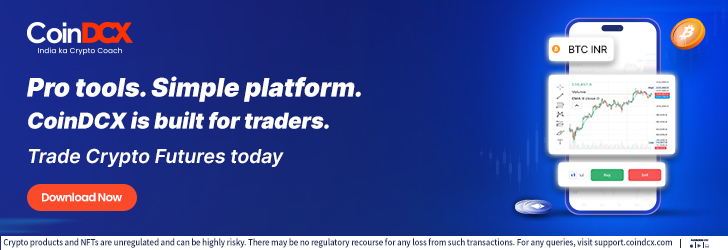In a landmark move, Circle issuer of the $62 billion USDC stablecoin, has secured in-principle approval from Abu Dhabi’s financial watchdog, positioning itself to reshape digital finance in the Middle East.
The greenlight arrives as global demand for stablecoins skyrockets, with USDC’s supply swelling over 40% this year. Furthermore, Circle’s regulatory win shows Abu Dhabi’s ambition to become a crypto hub, blending innovation with oversight. Here’s how this milestone could redefine money flows in the region and beyond.
Abu Dhabi Greenlight
Abu Dhabi Global Market’s Financial Services Regulatory Authority (FSRA) granted Circle preliminary approval to operate as a licensed money services provider. The decision, announced April 29, 2025, follows Circle’s incorporation in ADGM last December. Now, the firm edges closer to full licensure, enabling it to legally offer remittance and payment services across the UAE.
“This approval advances our strategy to establish deep roots in markets embracing the on-chain economy,” said Circle CEO Jeremy Allaire. The move signals Abu Dhabi’s growing appeal to crypto firms, thanks to its clear regulations and tax-free crypto trades. Notably, ADGM requires rigorous compliance checks, ensuring only vetted players enter its financial ecosystem.
USDC’s From $62B to Global Influence
USDC’s circulating supply has ballooned to $62 billion in 2025, up 40% year-to-date. Backed by U.S. government bonds, the stablecoin now holds 31% of Ethereum’s stablecoin market. Analysts credit its growth to rising use in cross-border payments and remittances, where speed and cost trump traditional banking.
Globally, stablecoins command a $230 billion market, projected to hit $3.7 trillion by 2030. USDC’s compliance-first approach contrasts with rivals like Tether, which faces scrutiny over reserve transparency. “Regulatory credibility is key for institutional adoption,” said Circle’s Dante Disparte, hinting at the firm’s strategy to court regulated markets.
Building Bridges
Circle’s Abu Dhabi push includes a partnership with Hub71, the emirate’s tech ecosystem. Together, they’ll support startups via grants, mentorship, and access to ADGM’s regulatory sandbox. Additionally, Circle teamed with LuLu Financial Holdings in late 2024 to streamline remittances between the Middle East, Asia, and Europe using USDC.
These alliances align with the UAE’s $2 billion blockchain investment plan. “Abu Dhabi is committed to becoming a global fintech base,” said Hub71 CEO Ahmad Ali Alwan. On the other hand, Circle’s new cross-border payments network launched last week aims to connect banks and fintechs for real-time transactions, further embedding USDC into mainstream finance.
Regulatory Chessboard
Abu Dhabi isn’t Circle’s first regulatory win. In 2024, it became the first stablecoin issuer compliant with the EU’s MiCA framework. It also debuted USDC in Japan via SBI Holdings this March. Such moves reflect a calculated strategy: prioritise jurisdictions with clear crypto rules to attract institutions.
ADGM’s Arvind Ramamurthy praised Circle’s “dedication to innovation within regulatory guardrails.” However, full approval in Abu Dhabi remains pending, requiring further checks. Still, the in-principle nod strengthens Circle’s case as it navigates a U.S. IPO quiet period, refusing to comment on regional plans.
The Middle East Push
The UAE’s crypto market is forecast to hit $254 million by 2025, fuelled by pro-innovation policies. Circle’s expansion here could unlock remittance corridors serving millions of migrant workers. For instance, the LuLu partnership targets cost-heavy routes like India-Pakistan and Philippines-GCC nations, where USDC slashes fees and wait times.
Moreover, ADGM’s sandbox allows Circle to test solutions like programmable wallets and tokenised assets. If successful, these could set precedents for global stablecoin utility. “The region is ripe for on-chain finance,” Allaire noted, pointing to Abu Dhabi’s blend of capital and regulatory foresight.
Uncertainties in a Booming Market
Despite momentum, hurdles remain. Circle must secure full ADGM licensing, a process vulnerable to delays or added scrutiny. Competition is fierce: Tether’s $148 billion USDT dominates, while central bank digital currencies (CBDCs) loom as potential rivals.
Regulatory fragmentation also poses risks. While the UAE and EU advance frameworks, the U.S. lags, creating compliance complexities. Still, Circle’s focus on transparency and reserves may win long-term trust. As Citigroup notes, stablecoins could capture 10% of global payment flows by 2030 if regulators and markets align.
A Pivot Point for Digital Finance
Circle’s Abu Dhabi milestone marks a pivotal step in bridging traditional finance with blockchain efficiency. With USDC’s credibility and strategic alliances, the firm is expected to anchor the Middle East’s crypto economy.
Yet, success hinges on executing partnerships, securing full licenses, and outpacing rivals. As stablecoins redefine money movement, Circle’s compliance-driven playbook could set the standard, turning regulatory nods into global dominance.






